UK: Jade Hawkmoth
Daphnis hypothous crameri Eitschberger & Melichar, 2010, European Entomologist 2: 67.Type locality: Thailand, Chiang Rai, Wiang Pa Pao, 3.vii.1989.
[Further details on this species, as well as photos of all stages, can be found on Lepiforum.]
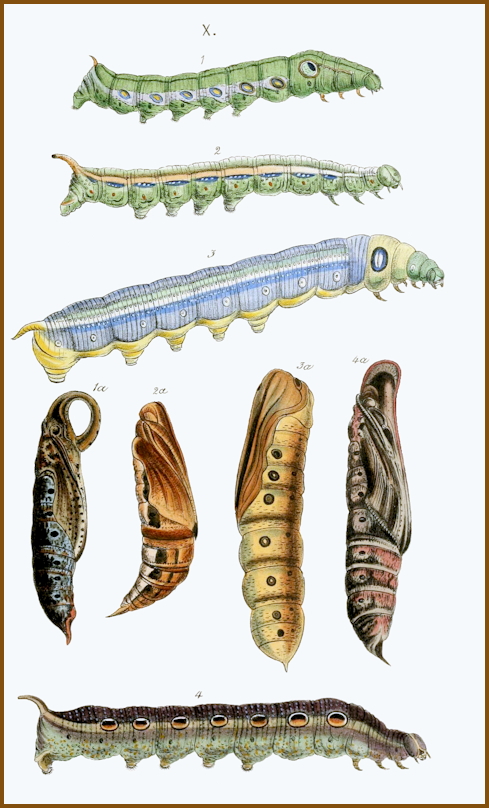
Palaeotropical; Oriental region.
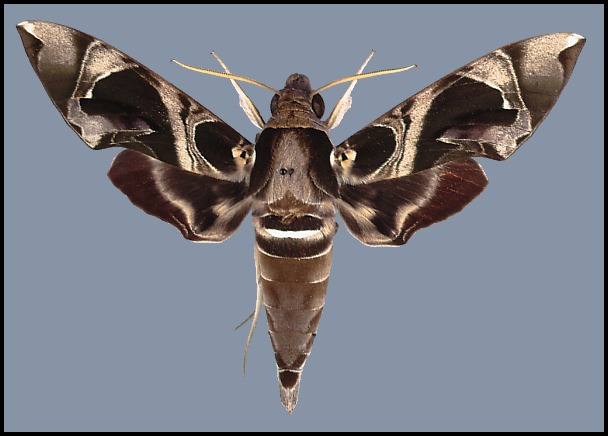
Wingspan: 86--120mm. Very like a dark Daphnis nerii (Linnaeus, 1758), but distinguished by a white spot at the forewing apex; head and collar uniformly dark purple-brown, thorax and first two abdominal segments dark green.
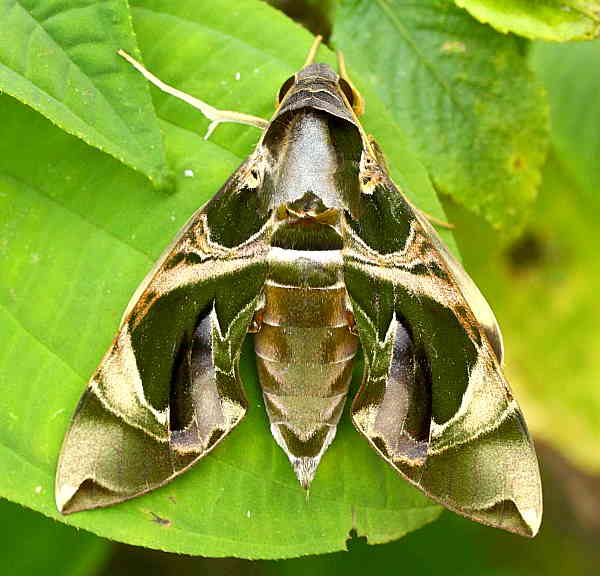
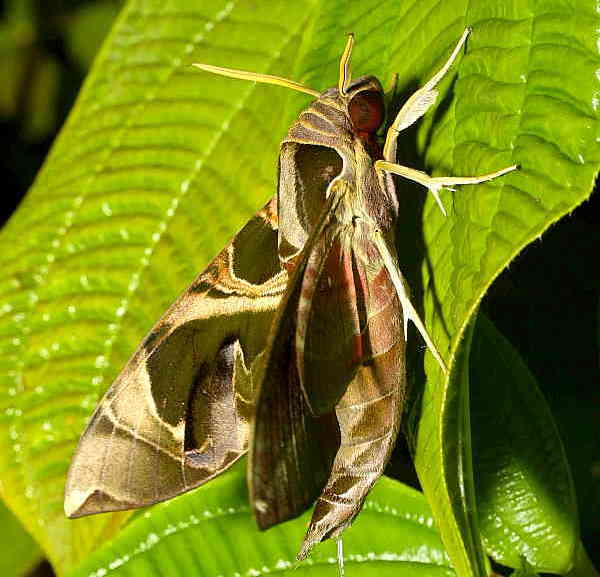
Daphnis hypothous is a very fast flyer, attracted to both sweet-smelling flowers and light, but little else is known of its behaviour.
Migrant. Multi-brooded in the Oriental region.
OVUM: Very similar to that of Daphnis nerii.
LARVA: Full-fed 60--100mm. Dimorphic: green or pale red.
Has never been found within the western Palaearctic region, but fully-grown examples from India (Bell & Scott, 1937) are usually apple-green (darker above), the thoracic segments with more yellow than the abdominal segments. A white dorso-lateral line, tinged with cadmium yellow at each end, extends from thoracic segment 2 to the base of the horn, and, on the abdominal segments, is edged with reddish-orange above and with a broken sky-blue line below. Laterally, these segments bear darker green, oblique stripes and yellow dots, with a large, blue eye-spot on thoracic segment 3. Anal claspers brown, edged with yellow. The brown, tubercled horn, unlike that of Daphnis nerii, is fully formed but blunt, stout, erect and slightly curved, similar in appearance to that of Agrius convolvuli (Fabricius, 1775). Although most larvae are green, some may be pale red. Before pupation, the whole body assumes a plum colour blotched with dark red.
Occurs on bushes, usually near water.
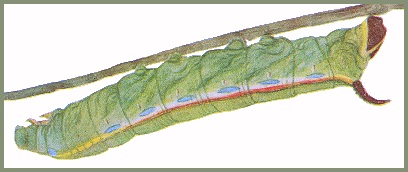
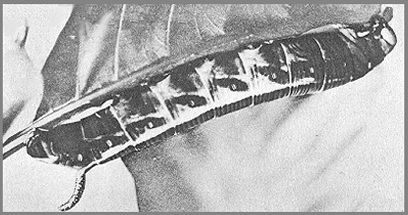
Hostplants. Woody Rubiaceae, such as Cinchona, Wendlandia and Uncaria in India (Bell & Scott, 1937).
PUPA: 60--80mm. Similar to that of Daphnis nerii, but with a thin black line running along the proboscis, over the head and along the whole dorsal surface, terminating, in this species, in a broad, triangular cremaster tipped with two points. The spiracles are located in a dark lateral band which runs parallel to two others along the ventral surface of the abdomen. Formed in a loosely spun cocoon among debris on the ground. Does not overwinter.
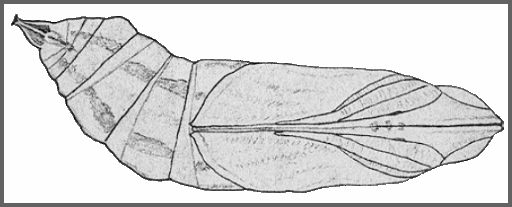

Occurs in the western Palaearctic region as a rare vagrant. However, the frequency is not known because of its confusion with Daphnis nerii. During the last hundred years a number have been discovered within the Middle East; one was even found in Scotland late last century but was probably imported as a pupa with cargo.
Extra-limital range. Sri Lanka, southern and northern India, Nepal, Burma/Myanmar, southern China, Taiwan, Thailand, Malaysia and western Indonesia (east to Sulawesi, Timor, Wetan and Tanimbar).
Eastern Indonesia (the Moluccan islands of Halmahera, Obi, Bacan, Seram, Ambon, the Kai Islands and probably Buru) as the nominate subspecies Daphnis hypothous hypothous (Cramer, 1780); then New Guinea, the Solomon Islands and northern Australia as the very distinct subspecies Daphnis hypothous moorei (Macleay, 1866) (syn. Daphnis hypothous pallescens Butler, 1875). [The latter is now regarded by many taxonomists as a good species, namely Daphnis moorei (Macleay, 1866).]
 Return to species list
Return to species list